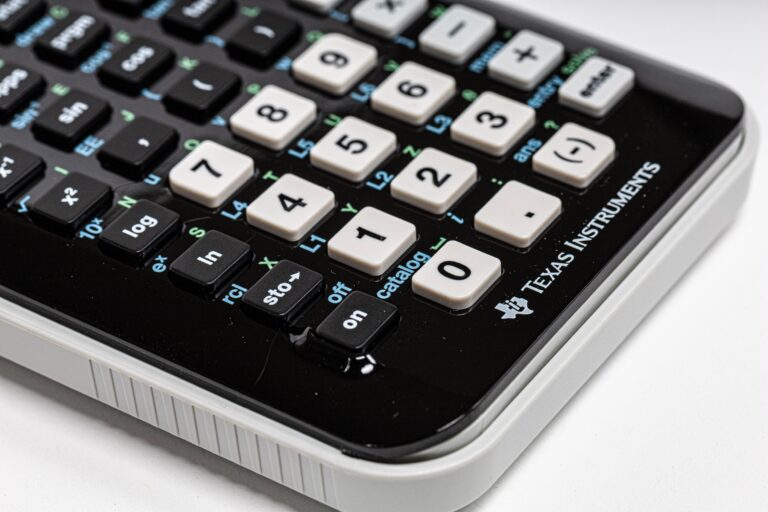How Do You Document & Report 529 Expenses?
To properly document a qualified expense paid for with a 529 savings account, you should save all receipts, bills, and other documentation related to the expense. The plan administrator or the Internal Revenue Service (IRS) may request these documents to verify that the expense was a qualified higher education expense.
This is the process of requesting a 529 distribution, deciding on expenses, saving the records, then finally reporting it to the IRS.
1. Withdraw Money From a 529 Account
Funds can be withdrawn from a 529 savings account by the account owner, or the designated beneficiary, by contacting the plan administrator and requesting a distribution.
You generally do not need to explain the reason or expected use of the funds to the plan administrator before withdrawing money from a 529 savings account. This is because the funds are yours. However, if you do not use them on a qualified expense, there will be penalties when it comes time to report them to the IRS during tax season. Any expense paid for by 529 funds that is not qualified will be subject to federal and state taxes and a 10% penalty on the earnings portion of the withdrawal.
2. Deciding on Expenses to Cover
Qualified higher education expenses can be covered with funds from a 529 savings account. The most common allowed expenses for these funds include:
- Tuition and fees for enrollment or attendance at an eligible college or university
- Room and board costs for when a student is enrolled at least half-time
- Books, supplies, and equipment that are required for schooling
- Computer or internet access fees when required for schoolwork
However, some expenses you think may be covered are actually not. These excluded expenses include, but are not limited to:
- Transportation and travel costs (airfare, gas, luggage, etc.)
- College application or testing fees
- Insurance
- Computers when not required by the school
- Medical expenses (except for certain disability-related expenses)
- Repayment of student loans over $10,000 in the student’s lifetime
3. Saving Records of the Expenses
To properly document a qualified expense paid for with a 529 savings account, you should save all receipts, bills, and other documentation related to what the funds are being used for.
I suggest keeping a spreadsheet (Google Sheets for the win) of all withdrawals, and how the funds were used. Keep track of dates of each transaction, and where and how the money was paid out for those expenses. If there are any paper receipts, keep those together in a folder (use a new folder every year), or digitize them with a scanner or phone camera.
All withdrawals and expenses should be documented, with each year recorded and stored separately. This is because when it comes time to report them to the IRS, you do so in the year-end tax season.
4. Reporting Use of 529 Funds to the IRS
Amazingly, when funds from a 529 savings account are used to pay for qualified education expenses, there is usually nothing needed to report on your federal income tax returns. There are however a couple of IRS forms that should be completed and submitted with the tax returns of the account owner (often the parent and not the student).
Forms 1099-Q and 1098-T lists the amount of the 529 plan distribution and how much was used to pay for college tuition and fees. While these two forms help with the calculation, they will not paint the full picture, and it is instead up to the 529 plan account owner to calculate the final taxable amount.
Incoming IRS Forms
There are two forms you should expect to get before doing your taxes for the year if you used 529 funds.
- The IRS Form 1099-Q will be issued by the 529 administrator and lists the amount of 529 distributions that were paid out that year. This will come in the mail or electronically as tax season start (February-April), just as a 1099 or W2 would come from your employer. Form 1099-Q lists the total distributions from a 529 plan during a given tax year, regardless of how the funds were spent.
- The IRS Form 1098-T, also known as the Tuition Statement, is a statement issued by a college or university that lists the amount a student paid in tuition, plus any other fees or course materials required during their enrollment. However, this form can be misleading because it does not provide a breakdown of all qualified expenses that a 529 plan can be used to pay for. It’s up to the beneficiary and their parents to save receipts and calculate the total amount of qualified 529 plan expenses during the tax year.
Calculating 529 Plan Taxable Distributions
If 529 funds are used for qualified expenses and the amounts distributed are within the federal limits, then there will be nothing to report on your taxes, and nothing will be taxable. However, there are a few situations where you will need to report 529 funds on your year-end taxes. 529 fund distributions only become taxable in the event of one or more of the following:
- Unqualified expenses were paid for by the funds
- Qualified expenses exceed the Adjusted Qualified Education Expenses (AQEE)
Adjusted Qualified Education Expenses (AQEE)
The AQEE refers to the total amount of qualified education expenses that are used to calculate education tax credits, such as the American Opportunity Tax Credit (AOTC) and the Lifetime Learning Tax Credit (LLTC).
AQEE is calculated by taking the total qualified education expenses, such as tuition and fees, and subtracting any tax-free educational assistance received, such as scholarships, grants, and distributions from a 529 plan. The resulting amount is the AQEE.
It’s important to note that the AQEE is used to calculate the amount of the education tax credit that can be claimed by a person, and not all the expenses that can be paid from the 529 plan distributions. The AQEE is just used for the calculation of the tax credit, and any distributions from a 529 plan can still be used for other qualified education expenses.
Reporting Taxable 529 Distributions to the IRS
After all that, you still need to calculate the taxable portion of the 529 plan distribution. To do this, you:
- Divide the AQEE by the total 529 plan distribution (Form 1099-Q, Box 1)
- Multiply that number by the earnings portion of the total distribution (Form 1099-Q, Box 2).
- Subtract this amount from the total distributed earnings.
Finally, the resulting number must be reported as income on the account owner’s federal income tax return, Schedule 1 Form 1040, line 8 or Form 1040NR, line 21. If the distribution is subject to the 10% penalty tax, the additional tax must be reported on Schedule 2 (Form 1040), line 6, or Form 1040NR, line 57.






